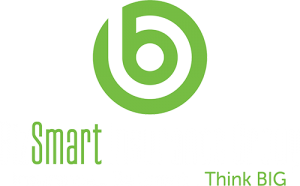7 Easy Steps to Reduce Your Exposure to Losses and Lower Your Insurance Costs
Running a business is tough stuff if you are like most of the small businesses that I insure. My clients who have performed the following below have found: Reductions in their EMOD (experience modifier for workers compensation), less errors in the audit process resulting in time and money savings, cleaner loss ratios with the carrier leading to reduction in annual premium (credits) and more quality relationships with their sub-contractors.
-
Certificates of Insurance – Always ask sub-contractors for proof of insurance naming your entity as additionally insured. On the certificate of insurance provided, make sure coverage’s meet your requirements (same limits as your policy-see additional insured below). It also helps to require vendors to provide an updated certificate of insurance for each job performed if you are not listed on the policy to receive a 30 day notice of cancellation. This is more time consuming, but is a great risk control measure. Large companies employ this practice.
-
Verification – Request that the certificate of insurance comes directly emailed from their insurance agent. I have seen many “fake” certificates of insurance provided to my clients that this is usually a way to mitigate that situation. If you still question coverage, have the sub-contractor provide you with the policy. Remember, this is about protecting your business not theirs.
-
Hold Harmless Agreements – This should be common practice with all business owners. If someone or an entity is providing a service on your behalf, they should be designated to indemnify you in case damages arise from their work. Also, a written contract is usually required for coverage to exist.
-
Payment – Do not pay the sub-contractor or anyone providing services to you until you have their certificate of insurance in hand (this clause should be provided in your written contract agreement). You will find out that this will save you time and money later on. Being proactive now and keeping up with the behavior will prevent future headaches. Please keep in mind that you should always try to collect the insurance certificate before work is started. If that is not possible, then employ the above practice.
-
Loss Control – Most commercial insurance companies provide the insured access to a loss prevention website that has all the tools necessary to have successful monthly loss control meetings. If you have multiple employees, give the appropriate employee the title of Loss Control Manager. Believe it or not, insurance companies find this as a successful business practice that reduces claims due to ownership of the position.
-
Additional Insured Status – When collecting certificates of insurance make sure that you are being listed as an additional insured on the policy in the description box on the certificate. If you want to protect yourself further, request to be specifically endorsed on the policy with respect to additional insured status. If the client cancels his policy for any reason, you will be notified directly from the insurance company (Non-payment of premium, Non-renewal, etc.).
-
Exclusions, Exclusions, Exclusions – All insurance in not created equal (not even close). Companies have different appetites and classes of business they like to write. In Arizona, a full or limited residential exclusion is commonly endorsed on the policy. So, if you are a contractor that performs work on new residential or new multi-family homes (including apartments and condominiums and duplexes), have the sub-contractor provide you with the forms and endorsement pages on the declaration pages of their policy. Remember, it is your due diligence as a business owner to make sure coverage is applicable to the scope of work performed. Just because a certificate of insurance is provided does not mean coverage will apply. (other big exclusions to look out for: designated work exclusion, subsidence exclusion, prior work exclusion)
If you practice these Standard Operation Procedure methods above, you will find more peace of mind and eventually it will reflect in your bottom line.
If you have any questions or would like to explore how our agency could save your business money, reach out via our short contact form.


